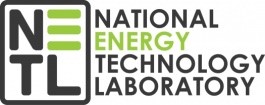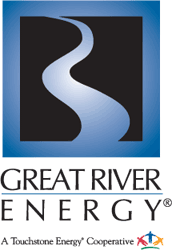Carbon Storage Atlas
Phase I Overview
The Energy & Environmental Research Center (EERC) in Grand Forks, North Dakota, created and managed the Plains CO2 Reduction (PCOR) Partnership from 2003 onward. During the course of Phase I (2003 to 2005), the initial region, comprising five U.S. states and two Canadian provinces, grew to encompass four more states and an additional province.
The PCOR Partnership aligned with the purpose of the wider Regional Carbon Sequestration Partnerships (RCSP) Program, namely to investigate optimal regional approaches to capture and store greenhouse gases (GHGs) to support federal targets for emission intensity reductions. Definition of the PCOR Partnership region was based on a number of common factors linking states and provinces, most notably the widespread, large stationary sources of carbon dioxide (CO2), comprising power generation and other industrial sectors including petroleum refineries and natural gas-processing and ethanol production plants. In addition, thick sequences of rocks (sedimentary basins) that host abundant fossil fuel resources and provide prospective settings for CO2 geological storage underlie much of the region. The inclusion of Canadian provinces reflected the transborder, northwest-to-southeast trend of much energy infrastructure in the region and allowed collaboration with the pioneering International Energy Agency’s Greenhouse Gas R&D Programme (IEAGHG) Weyburn CO2 Monitoring and Storage Project located in Saskatchewan.
Story of Interest
The Plains CO2 Reduction (PCOR) Partnership attracted more than 120 member organizations during a 16-year program. Consequently, a healthy attendance at annual membership meetings down the years involved a high level of delegate participation in discussion forums and workshops, complementing research and industry presentations. Veteran Energy & Environmental Research Center (EERC) geologist, Jim Sorensen, takes up the story by recalling the very first annual meeting.
“That 2003 meeting in Grand Forks was modest by recent PCOR Partnership standards, with, I recall, around 30 representatives from industry and governmental member organizations. [Carbon capture and storage (CCS)] as a carbon management option was not a widely known concept in the United States at the time, despite several decades of [carbon dioxide (CO2)] enhanced oil recovery operations in Texas. Perhaps underlining this early challenge, I distinctly remember that delegates from the power generation and oil industries coalesced into two separate groups on the first day, with minimal interaction. The inclusion of three Canadian provinces in the PCOR Partnership provided huge value in that early meeting, as Canada had developed a CCS Roadmap and established the (International Energy Agency’s Greenhouse Gas R&D Programme (IEAGHG)] Weyburn CO2 Monitoring and Storage Project as a pioneering international CCS field research program. Delegates from Environment Canada, in particular, enlightened many in the audience by clarifying Canadian perspectives on the relationship between CCS and climate change mitigation targets such as the Kyoto Protocol. The Weyburn project also provided an operational example of how power generation and oil companies could work together with governmental support to deploy CCS projects and stimulated much constructive discussion during the second day.”
Lessons Learned
Phase I of the Plains CO2 Reduction (PCOR) Partnership provided characterization of both carbon dioxide (CO2) capture sources and storage resource potential across the region to support the identification of practical and environmentally sound strategies for carbon management. Phase I results confirmed that the PCOR Partnership region has significant potential for the deployment of carbon capture and storage (CCS) projects across a range of industrial sectors and with technically viable options for storage.
From the capture perspective, the characterization of more than 1,000 large-scale stationary CO2 sources with combined annual CO2 emissions of more than 500 million metric tons underlined this significant regional CCS potential. Amine scrubbing was determined to be the most likely capture technology to facilitate CCS deployment.
Geological storage opportunities abound in the region. Deep saline formations (DSFs) provided the greatest estimated resource, with the potential to store up to 200 billion metric tons of CO2 – in theory, sufficient to cater to several centuries of regional emissions. Other identified geological storage resources with significant potential comprised depleted oil fields (estimated storage resource up to 12 billion metric tons of CO2) and unmineable coal seams (estimated storage resource up to 7 billion metric tons of CO2).
Notwithstanding the large volumetric storage potential of DSFs, Phase I results and consultation with partner organizations highlighted three opportunities for market-driven, commercial geological storage:
- Injection of CO2 for enhanced oil recovery (EOR), with associated storage incidental to the EOR process. Identified near-term opportunities comprised:
- Oil fields in close proximity to the existing Dakota Gasification Company CO2 pipeline in the Williston Basin.
- Alberta oil fields in close proximity to sources of acid gas (CO2 and hydrogen sulfide [H2S] mixtures) derived from natural gas processing.
- Injection of CO2 into unmineable lignite coal seams, enabling methane production and simultaneous incidental storage.
These three options therefore formed the basis for selecting PCOR Partnership Phase II field validation tests.
Terrestrial storage opportunities identified in Phase I included changes to agricultural land management and afforestation. Wetland restoration schemes, although not providing the largest terrestrial storage opportunity, were determined to offer significant short-term potential and therefore recommended for Phase II field evaluation.
Public outreach is an important component of CCS deployment, and PCOR Partnership Phase I products included a public website, fact sheets, and newspaper articles. Prairie Public Broadcasting produced and broadcasted a 30-minute documentary on the PCOR Partnership. These efforts formed a tool kit for future public communications, including Phase II field validation tests.
Geologist Rock-Fest
Most fossil fuel resources (coal, oil, and natural gas), and the greatest potential for carbon dioxide (CO2) geological storage, are contained within geological settings termed sedimentary basins. Consisting of large regional depressions in Earth’s crust, basins subside over geological time and progressively fill with sediments deposited from rivers, lakes, and seawater, or even carried by the wind. Over millions of years and with gradual burial, these sediments are compacted and lithified to form thick sequences of sedimentary rocks such as sandstone, limestone, and shale. Several resource-rich sedimentary basins underlie the Plains CO2 Reduction (PCOR) Partnership region, with deep saline formations, oil and gas reservoirs, and unmineable coal seams providing storage opportunities.
The Williston Basin constitutes a prominent example of such a setting in the PCOR Partnership region. Extending across large swathes of North Dakota, Montana, and Saskatchewan, plus areas of Manitoba and South Dakota, this basin has abundant fossil fuel reserves and potential storage resources. The Williston Basin also contains the Bakken Formation, a late Devonian/early Carboniferous-age unconventional oil play that may contain up to 1,000 billion barrels of oil resources. With the advent of horizontal drilling and fracturing technologies, siltstones and shales of the Bakken Formation have become a major oil resource.
Partners

U.S. Department of Energy

National Energy Technology Laboratory

University of North Dakota Energy & Environmental Research Center (EERC)

Alberta Department of Environment

Alberta Energy and Utilities Board

Alberta Department of Energy

Alberta Energy Research Institute

Amerada Hess Corporation

Basin Electric Power Cooperative

Bechtel Corporation

Center for Economic and Energy Development (CEED)

Chicago Climate Exchange

Dakota Gasification Company

Eagle Operating, Inc.

Encore Acquisition Company

Environment Canada

Excelsior Energy Inc.

Fischer Oil and Gas, Inc.

Great Northern Project Development, LP

Great River Energy

Interstate Oil and Gas Compact Commission

Kiewit Mining Group Inc.

Lignite Energy Council

Manitoba Hydro

Minnesota Pollution Control Agency

Minnesota Power

Minnkota Power Cooperative, Inc.

Montana–Dakota Utilities Co.

Montana Department of Environmental Quality

Montana Public Service Commission

Murex Petroleum Corporation

Nexant, Inc.

North Dakota Department of Health

North Dakota Geological Survey

North Dakota Industrial Commission Department of Mineral Resources, Oil and Gas Division

North Dakota Industrial Commission Lignite Research, Development and Marketing Program

North Dakota Industrial Commission Oil and Gas Research Council

North Dakota Natural Resources Trust

North Dakota Petroleum Council

North Dakota State University

Otter Tail Power Company

Petroleum Technology Research Centre

Petroleum Technology Transfer Council

Prairie Public Broadcasting

Saskatchewan Industry and Resources

SaskPower

Tesoro Refinery (Mandan)

University of Regina

U.S. Geological Survey Northern Prairie Wildlife Research Center

Western Governors’ Association

Xcel Energy



